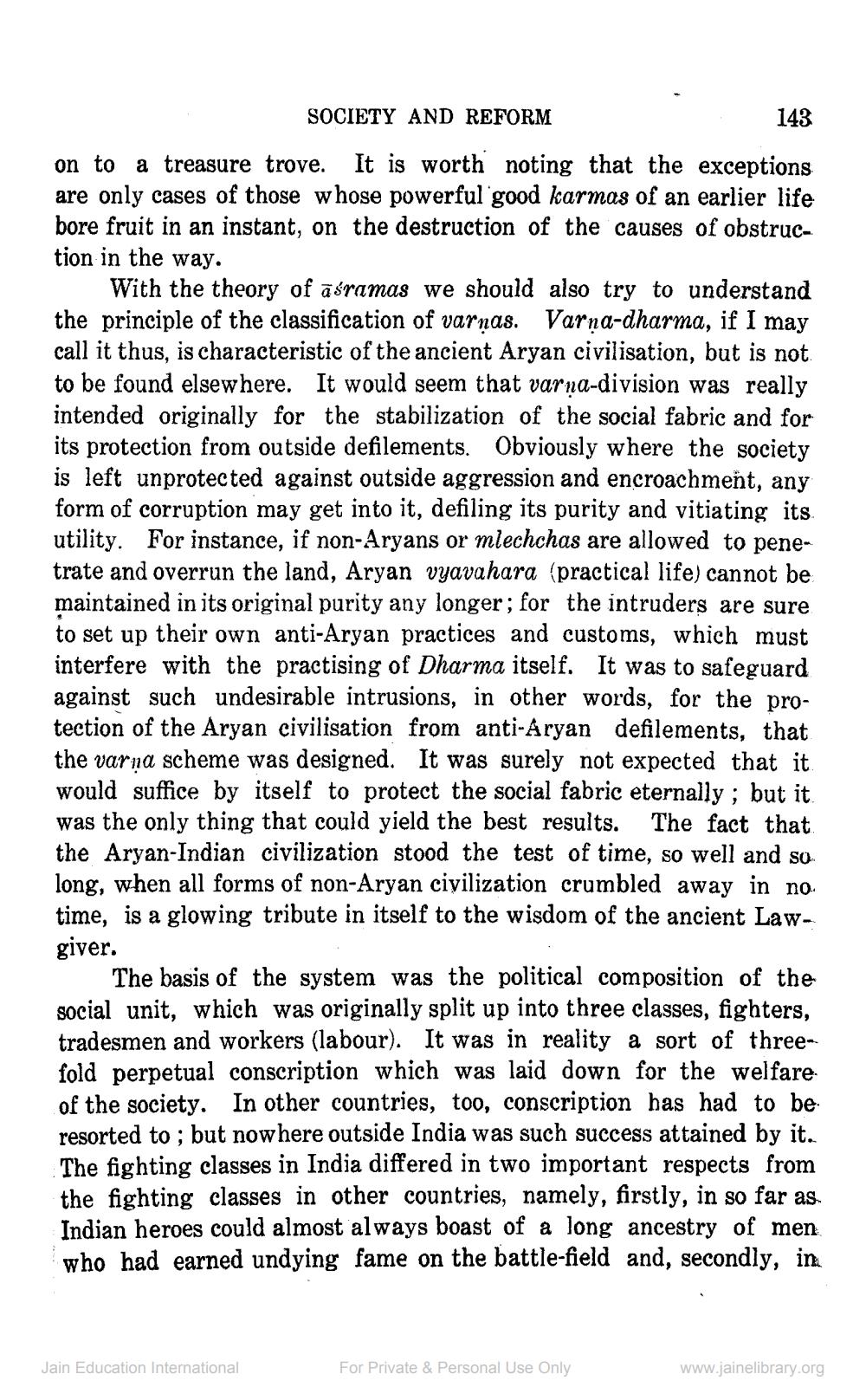________________
SOCIETY AND REFORM
143 on to a treasure trove. It is worth noting that the exceptions are only cases of those whose powerful good karmas of an earlier life bore fruit in an instant, on the destruction of the causes of obstruction in the way.
With the theory of asramas we should also try to understand the principle of the classification of varnas. Varna-dharma, if I may call it thus, is characteristic of the ancient Aryan civilisation, but is not. to be found elsewhere. It would seem that varņa-division was really intended originally for the stabilization of the social fabric and for its protection from outside defilements. Obviously where the society is left unprotected against outside aggression and encroachment, any form of corruption may get into it, defiling its purity and vitiating its utility. For instance, if non-Aryans or mlechchas are allowed to penetrate and overrun the land, Aryan vyavahara (practical life) cannot be maintained in its original purity any longer; for the intruders are sure to set up their own anti-Aryan practices and customs, which must interfere with the practising of Dharma itself. It was to safeguard against such undesirable intrusions, in other words, for the protection of the Aryan civilisation from anti-Aryan defilements, that the varna scheme was designed. It was surely not expected that it would suffice by itself to protect the social fabric eternally; but it was the only thing that could yield the best results. The fact that the Aryan-Indian civilization stood the test of time, so well and so long, when all forms of non-Aryan civilization crumbled away in no. time, is a glowing tribute in itself to the wisdom of the ancient Lawgiver.
The basis of the system was the political composition of the social unit, which was originally split up into three classes, fighters, tradesmen and workers (labour). It was in reality a sort of threefold perpetual conscription which was laid down for the welfare of the society. In other countries, too, conscription has had to be resorted to; but nowhere outside India was such success attained by it. The fighting classes in India differed in two important respects from the fighting classes in other countries, namely, firstly, in so far as Indian heroes could almost always boast of a long ancestry of men who had earned undying fame on the battle-field and, secondly, in
Jain Education International
For Private & Personal Use Only
www.jainelibrary.org




